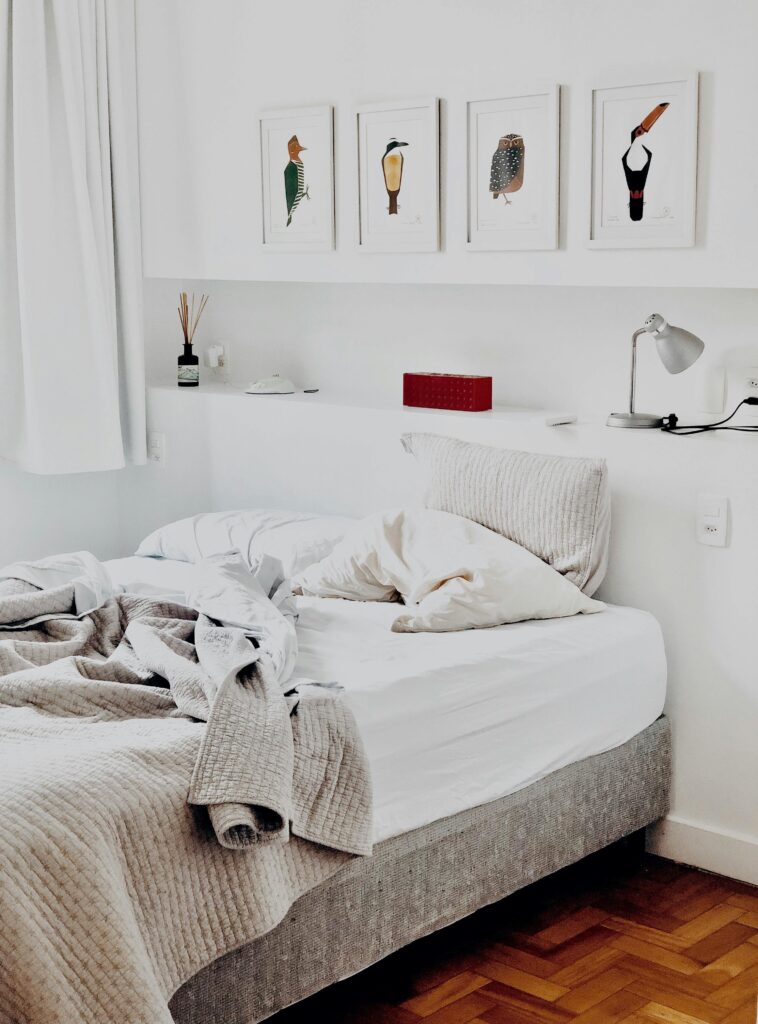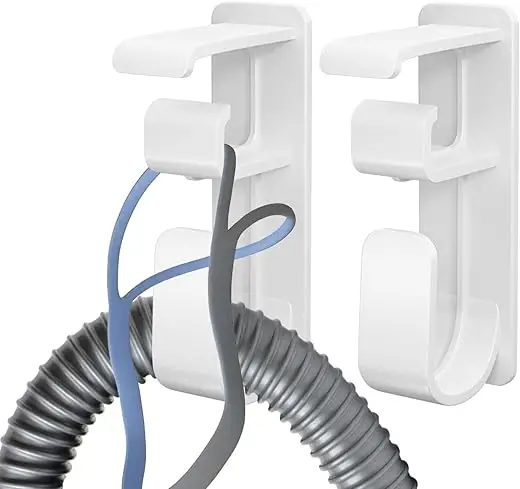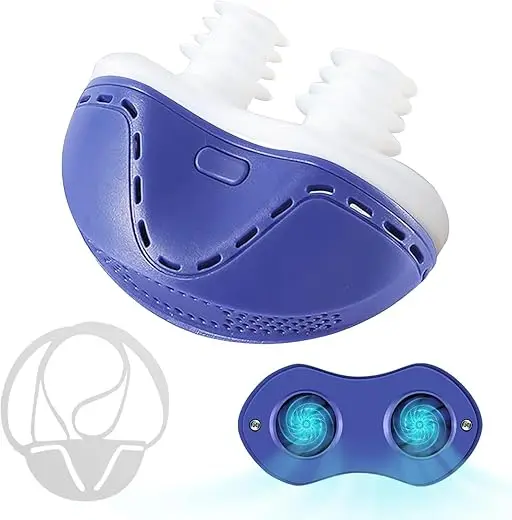Introduction: When Your Child’s Sleep Isn’t Just “Growing Pains”
Every parent has watched their child sleep, marveling at the peace and innocence of the moment. But what if those cute little snores or restless movements signal something more serious? Pediatric sleep apnea affects 1-5% of children, with many cases going undiagnosed for years. Unlike adults who become sleepy, children with sleep apnea often become hyperactive, struggle in school, or show behavioral problems that get misdiagnosed as ADHD.
The stakes couldn’t be higher. Untreated sleep apnea during crucial developmental years can affect your child’s growth, cognitive development, academic performance, and emotional well-being. This comprehensive guide will help you recognize the often-subtle signs of sleep apnea in children, understand when to seek help, and navigate the path to diagnosis and treatment.
Understanding Pediatric Sleep Apnea: It’s Different Than You Think
Pediatric sleep apnea occurs when a child’s breathing is partially or completely blocked repeatedly during sleep. While it shares similarities with adult sleep apnea, the causes, symptoms, and treatments differ significantly. Children’s airways are smaller and more collapsible, their sleep patterns are different, and their bodies respond uniquely to sleep disruption.
There are two main types affecting children:
- Obstructive Sleep Apnea (OSA): The most common type, usually caused by enlarged tonsils and adenoids
- Central Sleep Apnea (CSA): Less common, related to brain signal problems, often seen in premature infants or children with neurological conditions
Age-Specific Sleep Apnea Symptoms in Children
Sleep Apnea in Babies (0-12 Months): Critical Early Signs
Nighttime symptoms in babies:
- Pauses in breathing lasting more than 20 seconds
- Color changes (pale, bluish, or gray skin)
- Frequent awakening with crying
- Difficulty establishing regular sleep patterns
- Sweating excessively during sleep
- Sleeping in unusual positions (neck hyperextended)
- Noisy breathing or high-pitched sounds (stridor)
- Difficulty feeding or poor weight gain
Daytime symptoms in babies:
- Difficulty feeding or frequent pausing during feeds
- Failure to thrive or poor weight gain
- Developmental delays
- Lethargy or conversely, excessive fussiness
- Breathing through mouth consistently
Red flags requiring immediate medical attention:
- Any blue coloring (cyanosis) around lips or face
- Breathing pauses you can count to 20
- Limpness or difficulty waking
- Persistent breathing rate over 60 breaths per minute
Sleep Apnea in Toddlers (1-3 Years): The Overlooked Years
Nighttime symptoms in toddlers:
- Loud snoring, especially with pauses
- Restless sleep with frequent position changes
- Sleeping with neck extended or in unusual positions
- Night terrors or confused awakenings
- Bedwetting after being dry (secondary enuresis)
- Mouth breathing with dry lips
- Sweating heavily, especially around head and neck
- Coughing or choking during sleep
Daytime symptoms in toddlers:
- Hyperactivity rather than sleepiness
- Difficulty with potty training
- Frequent tantrums beyond typical “terrible twos”
- Speech delays or unclear speech
- Chronic mouth breathing
- Frequent upper respiratory infections
- Picky eating or difficulty swallowing
- Growth concerns (height or weight below expected)
Sleep Apnea Symptoms in Preschoolers (3-5 Years)
Nighttime symptoms in preschoolers:
- Snoring three or more nights per week
- Witnessed apneas (breathing pauses)
- Restless sleep with frequent awakening
- Nightmares or night terrors
- Bedwetting beyond age-appropriate time
- Sleeping in odd positions (sitting up, head hanging off bed)
- Grinding teeth (bruxism)
- Sleep talking or sleepwalking
Daytime symptoms in preschoolers:
- Behavioral problems mimicking ADHD
- Difficulty paying attention in preschool
- Excessive daytime sleepiness or need for naps
- Morning headaches
- Chronic nasal congestion
- Dark circles under eyes (“allergic shiners”)
- Poor appetite or slow eating
- Social difficulties with peers
Sleep Apnea Symptoms in School-Age Children (6-12 Years)
Nighttime symptoms in school-age children:
- Loud, persistent snoring
- Obvious breathing pauses witnessed by parents
- Gasping or snorting sounds
- Excessive movement during sleep
- Bedwetting in previously dry children
- Difficulty waking for school
- Complaints of insomnia or poor sleep
- Unusual sleep positions
Daytime symptoms in school-age children:
- Poor academic performance or declining grades
- Difficulty concentrating (“spacing out”)
- Hyperactivity or disruptive behavior
- Emotional instability or mood swings
- Morning headaches
- Chronic fatigue despite adequate sleep time
- Falling asleep in class
- Weight problems (either obesity or poor weight gain)
The Hidden Symptoms: What Parents Often Miss
Behavioral and Cognitive Signs Often Misdiagnosed
Many children with sleep apnea are misdiagnosed with ADHD, learning disabilities, or behavioral disorders. Watch for:
Attention and Focus Issues:
- Inability to complete tasks
- Frequently losing things
- Difficulty following multi-step instructions
- Daydreaming excessively
- Poor organizational skills
- Homework taking hours longer than it should
Emotional Regulation Problems:
- Extreme mood swings
- Overreacting to minor frustrations
- Difficulty calming down
- Anxiety, especially about sleep
- Depression or withdrawal from activities
- Low self-esteem
Academic Red Flags:
- Declining grades despite effort
- Teacher reports of “not working to potential”
- Difficulty with memory tasks
- Poor test performance despite knowing material
- Avoiding school or school refusal
Physical Symptoms Beyond Snoring
Growth and Development Concerns:
- Height or weight below growth curve
- Delayed puberty
- Narrow palate or crowded teeth
- Enlarged tonsils visible when mouth open
- Chronic mouth breathing changing facial structure
- “Adenoid face” – elongated face with open mouth appearance
Cardiovascular Signs:
- High blood pressure (rare but serious)
- Complaints of heart racing
- Chest pain during physical activity
- Exercise intolerance
Immune System Effects:
- Frequent ear infections
- Recurring strep throat
- Chronic sinusitis
- Multiple courses of antibiotics yearly
Special Populations: Higher Risk Children
Premature Infants and Sleep Apnea
Babies born before 37 weeks have immature respiratory control centers, making them susceptible to:
- Central sleep apnea
- Periodic breathing patterns
- Need for home apnea monitors
- Higher risk continuing into childhood
Children with Down Syndrome
50-100% of children with Down syndrome have sleep apnea due to:
- Low muscle tone (hypotonia)
- Narrow upper airways
- Enlarged tongue (macroglossia)
- Increased risk of obesity
Children with Obesity
Excess weight increases sleep apnea risk through:
- Fat deposits around upper airway
- Decreased lung volume
- Increased inflammation
- Earlier onset of adult-type OSA
Children with Craniofacial Abnormalities
Conditions affecting facial structure increase risk:
- Cleft palate
- Pierre Robin sequence
- Achondroplasia
- Treacher Collins syndrome
When to Worry: Red Flags Requiring Immediate Action
Seek emergency care if your child has:
- Blue or gray skin color
- Extreme difficulty breathing when awake
- Consciousness problems or difficulty waking
- Chest retractions (skin pulling in around ribs when breathing)
- Breathing rate over 40 (toddlers) or 30 (older children) per minute
Schedule urgent pediatrician visit for:
- Snoring with witnessed breathing pauses
- Behavioral problems affecting school or home life
- Growth concerns with snoring
- Bedwetting after being dry for 6+ months
- Morning headaches more than once weekly
The Diagnostic Journey: What to Expect
Step 1: Pediatrician Evaluation
Your pediatrician will:
- Review detailed sleep history
- Perform physical examination focusing on:
- Tonsil and adenoid size
- Facial structure and jaw position
- Weight and growth measurements
- Blood pressure
- Nasal passages and throat
- May use screening questionnaires:
- Pediatric Sleep Questionnaire (PSQ)
- BEARS sleep screening tool
- Modified Epworth Sleepiness Scale for children
Step 2: Sleep Study (Polysomnography)
If sleep apnea is suspected, an overnight sleep study is the gold standard for diagnosis:
What happens during a pediatric sleep study:
- Conducted in child-friendly sleep labs
- Parent stays overnight with child
- Sensors monitor breathing, oxygen, heart rate, brain waves
- Video recording to observe sleep positions and movements
- Usually completed in one night
Preparing your child:
- Explain it’s like a “sleepover with stickers” (sensors)
- Bring favorite pajamas, stuffed animals, books
- Maintain normal bedtime routine
- Pack snacks and breakfast
- Consider visiting the lab beforehand to reduce anxiety
Step 3: Understanding Results
Sleep study results show:
- AHI (Apnea-Hypopnea Index): Number of breathing events per hour
- Normal: Less than 1
- Mild: 1-5
- Moderate: 5-10
- Severe: Greater than 10
- Oxygen saturation levels
- Sleep architecture disruption
- Presence of central vs. obstructive events
Treatment Options: Finding What Works for Your Child
First-Line Treatment: Adenotonsillectomy
Removal of tonsils and adenoids successfully treats 70-90% of otherwise healthy children with OSA:
- Outpatient or overnight procedure
- Recovery takes 1-2 weeks
- Dramatic improvement often seen immediately
- May need follow-up sleep study to confirm resolution
CPAP Therapy for Children
When surgery isn’t appropriate or doesn’t fully resolve symptoms:
- Specially designed pediatric masks
- Lower pressure settings than adults
- Gradual desensitization process
- Decorative options to increase acceptance
- Success requires family commitment
Alternative Treatments
Orthodontic interventions:
- Rapid maxillary expansion for narrow palates
- Mandibular advancement devices for older children
- Early orthodontic evaluation recommended
Weight management:
- Pediatric weight loss programs
- Family-based lifestyle changes
- Nutritionist consultation
- Age-appropriate physical activity
Medications:
- Nasal steroids for mild cases
- Leukotriene modifiers (montelukast)
- Treatment of allergies reducing nasal congestion
Watchful waiting:
- For very mild cases
- Requires regular monitoring
- May be appropriate if tonsils likely to shrink with age
Living with Pediatric Sleep Apnea: Practical Parent Tips
Creating an Optimal Sleep Environment
- Keep bedroom cool (68-72°F) and dark
- Use white noise to mask household sounds
- Elevate head of bed slightly (30 degrees)
- Remove electronics from bedroom
- Maintain consistent bedtime routine
- Ensure hypoallergenic bedding
School Communication Strategies
- Inform teachers about diagnosis and treatment
- Request accommodations if needed:
- Extra time for tests if fatigue is an issue
- Movement breaks for hyperactivity
- Preferred seating away from distractions
- Provide updates on treatment progress
- Consider 504 plan if academic impact is significant
Supporting Your Child Emotionally
- Normalize treatment (many kids need help sleeping better)
- Create reward systems for treatment compliance
- Connect with other families facing similar challenges
- Address any bullying related to CPAP or symptoms
- Celebrate improvements, no matter how small
Long-Term Outlook: Hope and Healing
The good news is that pediatric sleep apnea is highly treatable, and early intervention can prevent serious complications. With proper treatment:
Immediate improvements (within weeks):
- Better sleep quality
- Improved behavior and mood
- Increased energy levels
- Better appetite
Medium-term benefits (3-6 months):
- Academic performance improvement
- Growth catch-up
- Fewer infections
- Improved social interactions
Long-term outcomes (1+ years):
- Normal growth and development
- Resolution of cardiovascular risks
- Prevention of adult sleep apnea
- Optimal cognitive development
Taking Action: Your Child’s Sleep Health Checklist
Start tonight by observing and documenting:
✓ Sleep observation for one week:
- Does your child snore? How loudly?
- Any pauses in breathing?
- Restless sleep or unusual positions?
- Sweating during sleep?
- Difficulty waking in the morning?
✓ Daytime behavior tracking:
- Energy levels throughout the day
- Attention and focus at school
- Emotional regulation
- Physical complaints (headaches, etc.)
✓ Growth and development review:
- Plot on growth chart
- Compare to siblings at same age
- Note any concerns from teachers
✓ Prepare for doctor’s visit:
- Video record snoring if possible
- Complete sleep diary
- List all symptoms, even seemingly unrelated
- Prepare questions about testing and treatment
Conclusion: You’re Not Alone in This Journey
Discovering your child may have sleep apnea can feel overwhelming, but remember that you’re taking the most important step by learning to recognize the symptoms. Pediatric sleep apnea is not a reflection of your parenting – it’s a medical condition that requires medical treatment.
Trust your instincts. If something seems wrong with your child’s sleep or daytime behavior, pursue answers. The “wait and see” approach that was common in previous generations can mean years of unnecessary struggle for your child. Today, we have effective treatments that can transform your child’s life.
Every child deserves restful sleep and the opportunity to reach their full potential. By addressing sleep apnea early, you’re giving your child the gift of better health, improved learning, and happier days. The journey may seem daunting, but on the other side lies better sleep for your entire family.
Remember: This guide provides general information about pediatric sleep apnea symptoms. Always consult with your child’s healthcare provider for personalized medical advice and treatment decisions.



